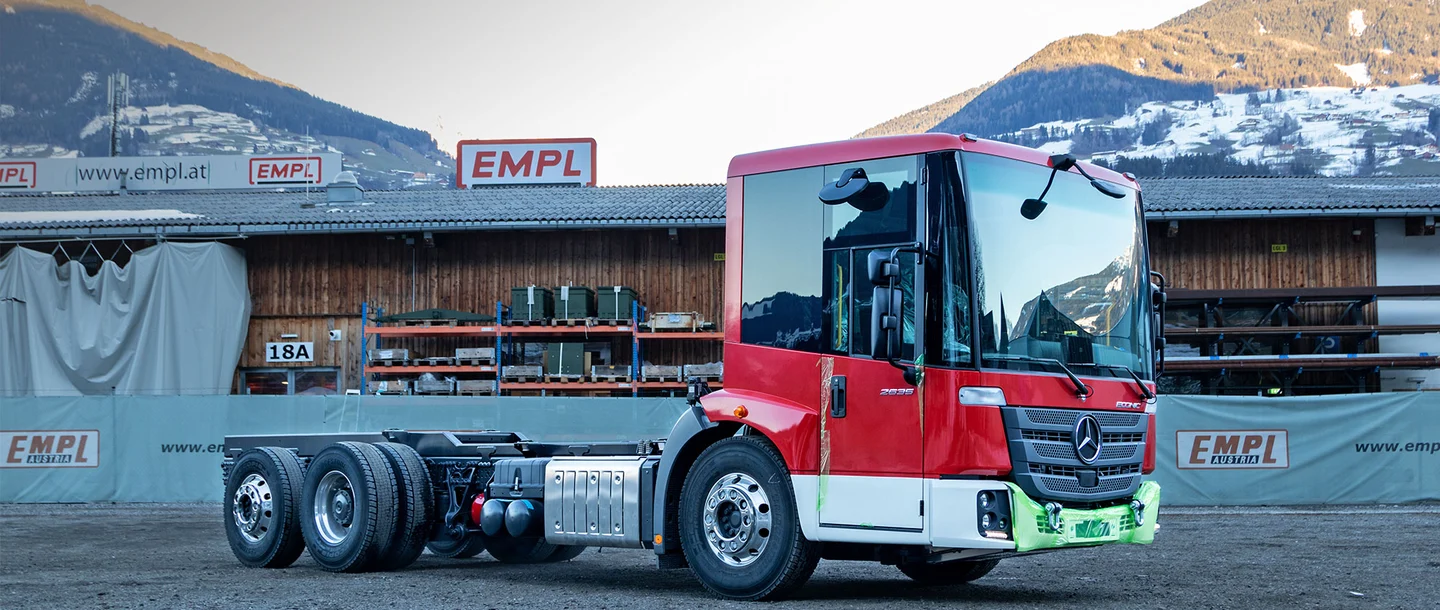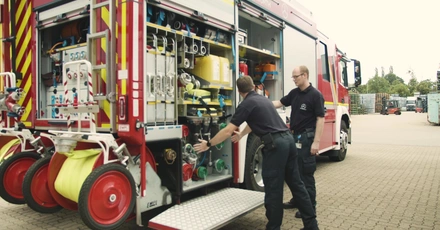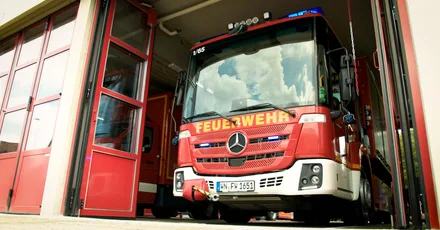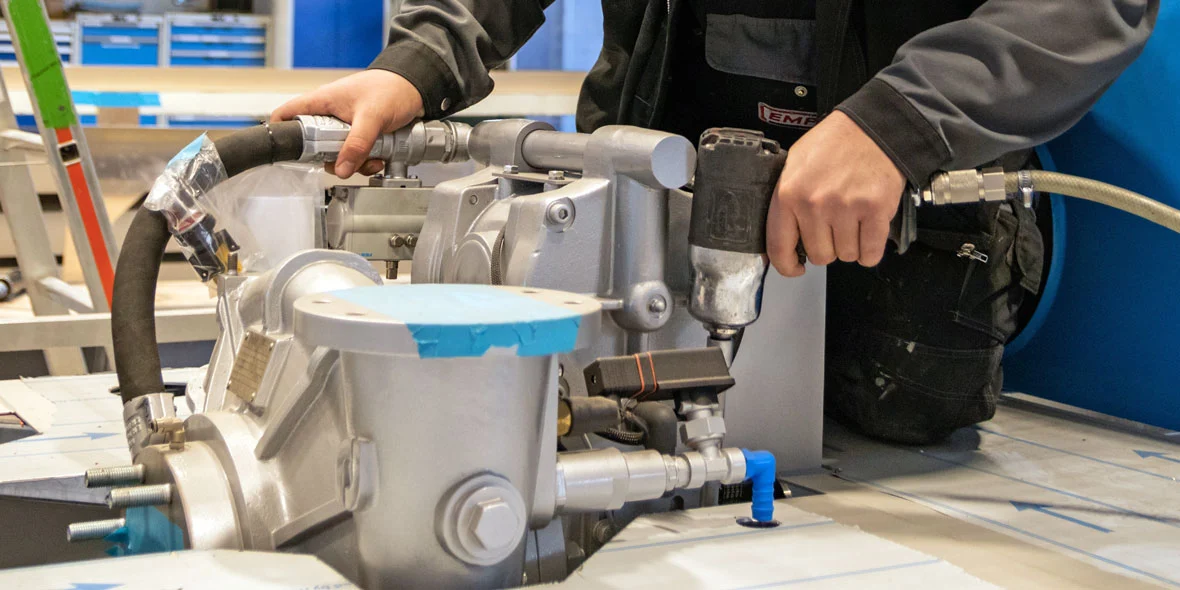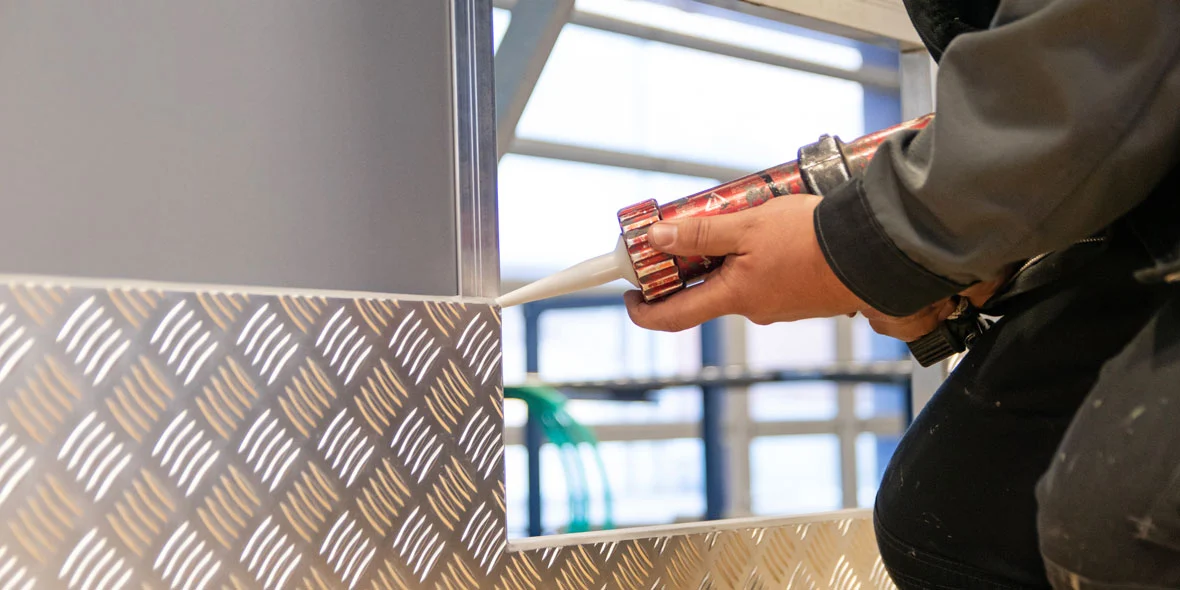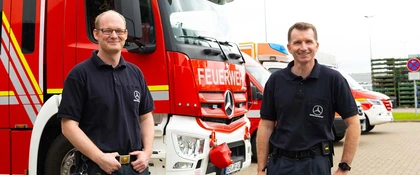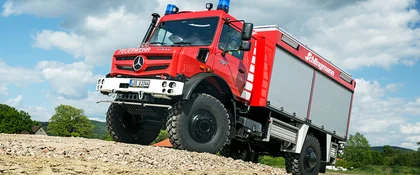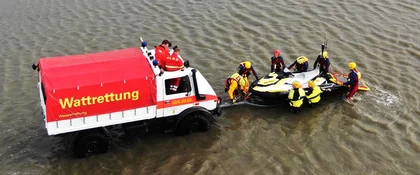Without specific pre-planning, there’s no successful manufacture.
And an Econic is the perfect fit for complex special-purpose vehicle bodies! So what steps do you have in order to get a chassis for special-purpose vehicles?
Thomas Moigg: Before we start retrofitting, a lot of advance planning is required from the works fire brigade. It needs to outline what its specific requirements are for the chassis, technology and body of the fire engine. The fire brigade then brings us on board quite early on in the process, when we carry out an initial technical check to verify what is actually possible to do with the vehicle and if this is compatible with what the chassis is able to do and what we want to do with the body of the firefighting vehicle?
This planning process takes about a year, and it is only when this stage is successfully completed that an order is actually placed with us. But as soon as this is done, it’s time for work to get underway: coordination meetings are held with the fire department and our technical departments (mechanics and electrics) in order to really discuss everything in detail again before assembly begins. After a final assembly meeting, we go through the entire 3D design of the vehicle body again together. It’s only when we have gone through all of this that actual manufacture begins – starting with ordering any components that need to be purchased as well as in-house parts manufacture.
The Econic at the Wörth plant fire brigade: Safety ex factory.
Detailed work, coordination and testing are the name of the game.
If everything is installed correctly, is the loading process able to begin?
Thomas Moigg: Yes, then things really get going. Each piece of equipment is assigned to a specific equipment room defined by us and the fire brigade. This is followed by the so-called frame structure meeting and approval of the frame structure with the customer.
Does this mean that this is when the customer will see the chassis and the special-purpose vehicle body for the first time?
Thomas Moigg: That’s right. Then, together we look at every single piece of cargo, from the screwdriver to the hydraulic rescue kit, and discuss whether in practice everything is as suited to its purpose as we thought it would be, before the equipment is finally installed. We then document all the firefighting equipment and keep it on the vehicle. This process takes about two to three days.
After that, we start the internal tests. Depending on the vehicle equipment, these take approximately two to three weeks. On the Econic at the Wörth works fire brigade, this will include pump and foam tests as well as of course completing the process with an overall quality control. And when that’s done, it’s time for customer approval. They will check that we have fully complied with our scope of delivery and we will carry out an initial joint commissioning of the vehicle. Provided that no extra work needs to be done, we usually need about one week to complete this step. Otherwise, we carry out the extra work that needs to be done and then deliver the vehicle to the fire brigade.
Flexibility from the vehicle body manufacturer, vehicle training with the customer.
Does extra work need to be done often?
Thomas Moigg: The fact that the project period is so long naturally means that the fire brigade’s requirements will sometimes change. We notice it most of all with our customers from the automotive industry: the rise of e-mobility and the adaptations that plants make as a result of this means that the fire brigades’ requirements change massively. This means that sometimes, different technical materials are needed so that these requirements can be met. And this in turn means that cargo has to be replaced or added to.
That sounds a bit like doing a puzzle on a vehicle...
Thomas Moigg: There are always changes. It’s never the case that absolutely everything fits as you’ve planned. Some things appear to be installed effectively, but then often a different picture emerges in practice. The changes we are able to make are the result of the collaborative work process with the customer – this is vital and also a little something that makes us stand out: we produce special vehicle solutions for individual vehicles. This means that we don’t have a blueprint we have to absolutely stick to and instead, we can really start with a blank sheet of paper and design everything from scratch together with the customer.
Every vehicle is therefore unique.
Thomas Moigg: That’s why we run so many projects for works fire brigades, because every industrial plant will have completely different requirements. No vehicle is the same: each and every one is completely unique.
And the fact that requirements can change several times means that a huge degree of flexibility is required on the customer side.
Thomas Moigg: That is why we are engaged in thorough dialogue with the customer throughout the entire duration of the project. This is because there are many facets to a vehicle and because requirements can change over two years. It happens a lot, but adapting to change is what we are all about.
If the vehicle with its special-purpose body is accepted by the customer, does this mean that the project is completed?
Thomas Moigg: Not yet. Our After Sales team then travels to train the firefighters on site on how to use the new vehicle – this takes one to two weeks. This process is sometimes repeated after a few months so the firefighters can further consolidate their knowledge.
So how long would you say the entire process takes from the initial meeting with the customer to training the firefighters on the finished vehicle?
Thomas Moigg: On average, it usually takes two and a half to three years.
A story worth continuing?
We will be accompanying the Econic for the factory fire brigade in Wörth over the next few months until it is put into service. Don’t miss any articles – get a free subscription to the Econic News.
Register now
